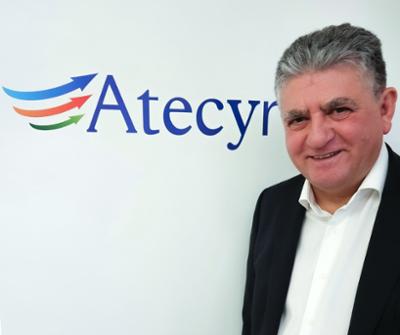

José Porras (Atecyr): Technicians need to be trained in decarbonisation
The decarbonisation strategy should not be limited to electrification with renewables, but to rehabilitating the building stock to reduce demand, and improving equipment efficiency by allowing the use of systems that operate at the most moderate temperatures to avoid distribution losses. So says José Porras, president of the Spanish Technical Association of Air Conditioning and Refrigeration (Atecyr), who explains in the following interview the main challenges facing the air conditioning and refrigeration industry in Spain.
What is the current state of decarbonisation in the air-conditioning and refrigeration sector?
We are at the dawn of decarbonisation. At present, the percentage of decarbonised buildings is less than 1%. This figure, although modest, marks the beginning of a profound and accelerated change. Atecyr addresses the magnitude of the challenge: to help decarbonise one million GWh/year. The strategy should not be limited to electrifying with renewables, but to rehabilitating the building stock to reduce demand, and improving equipment efficiency by allowing the use of systems that operate at the most moderate temperatures to avoid distribution losses. The roadmap to 2050 calls for a comprehensive transformation, from the envelope to the technical installations and finally the integration of renewables.
What should be the next steps in this area?
Right now, the most important thing is to inform citizens of the regulations in force, the mandatory European regulations and to inform them of the aid available, both in terms of personal income tax deductions and municipal property tax deductions in many municipalities and the Energy Saving Certificates (CAE in Spanish). In many cases, these subsidies make the cost of decarbonisation practically zero.
In addition, the next steps should include a national roadmap consistent with Directive 2024/1275. The strategy must be regulatory and economic, but also technical and formative. Priority should be given to the progressive refurbishment of buildings through hybrid solutions: aerothermal, solar energy (photovoltaic and thermal), heat networks, automation and control, all integrated under energy efficiency, indoor environmental quality and life cycle criteria.
What is the impact of training and outreach on these issues?
Decarbonisation is a technologically new issue, and a lot of information and training needs to be provided to technicians. This is one of the reasons why Atecyr offers the Atecyr 2025 Decarbonisation Tour, which consists of 5 stages, namely: Elche (29 May), Bilbao (18 June), Barcelona (26 June), Madrid (25 September) and Cordoba (17 October). We pursue two goals: firstly, to provide information to the largest number of Atecyr members and technicians in the sector, presenting projects of facilities already retrofitted in various climatic zones; and secondly, to transmit and disseminate training on decarbonisation in a theoretical and practical manner with workshops where attendees can exchange opinions and possible solutions to be implemented. The Decarbonisation Tour initiative shall continue in 2026 and 2027 with additional stages to be added in due course.
This training work is essential for professionals to understand and apply concepts such as "global warming potential" or flexible energy demand management. The new regulatory framework requires independent experts and multidisciplinary teams working together: engineers, architects, installers and maintainers. Without this technical preparation, incentives and regulations will not achieve the desired impact.
What other challenges of the energy transition does the air conditioning and refrigeration sector face in Spain?
The installation of renewable energy solutions is part of the energy transition and decarbonisation process. Complementary solutions such as aerothermal, solar thermal and photovoltaic solutions, heat pumps, cogeneration and efficient electrical systems must be integrated into a balanced energy model adapted to the specific conditions of each building and climate zone. Therefore, it is not only necessary to decarbonise and install renewables in buildings, but to go beyond the "renewables + electrification" binomial. Energy transition in air conditioning requires efficiency, decarbonisation and indoor environmental quality to be combined. Atecyr advocates a hybrid approach that takes into account the climatic diversity of Spain, the use of technologies such as free cooling or energy recovery and an energy retrofitting of buildings based on real data, energy certificates and life cycle analysis.
In addition, it is key to coordinate actions such as audits, renewal passports and regular inspections, all supported by interoperable databases to guide long-term investment decisions.





